Tall Timber Tales
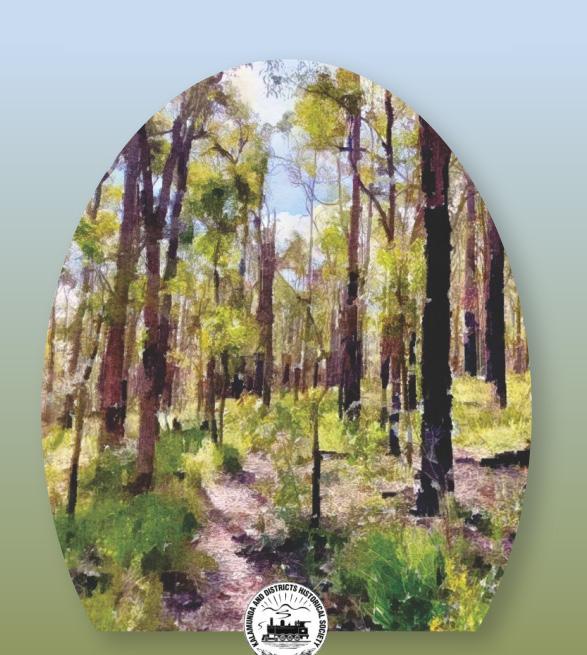


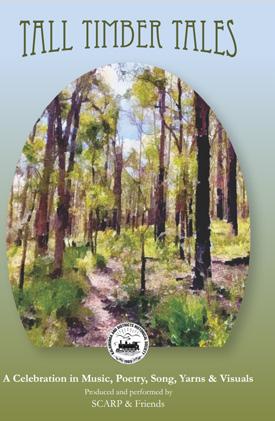
Author : Jones, Iris
Description: 47 pages
Summary:
Tall Timber Tales is a musical production produced by Iris Jones and Performed in November 2022 at the Jack Healey Centre in Kalamunda by SCARP & Friends. This document is a compilation including the programme, narrative text as read at the performance, images from slides used in accompanying Powerpoint presentation, scored original music for all songs, poetry, and a link to the video of the performance.
Location: 782.14 TAL Local History Collection
Copyright: Home Sweet Home – J.H. Payne & H.R. Bishop; Daisy Daisy - Harry Dacre; Mrs. Emma Wallis of Walliston – Fiona Davidson; Kalamunda Hotel Ghost – Wendy Evans; Immigrants – Rose Guimelli. Francis is adapted from a poem by J.F. McNamara, music Iris Jones. All other music, songs and lyrics, Iris Jones.
Contact: Local History Collection Office
Kalamunda Library, 7 Williams Street, Kalamunda, WA 6076 Website: kalamunda.wa.gov.au/libraries
All copyrights remain with author / original publication. Scanned publications may not be fully accessible.
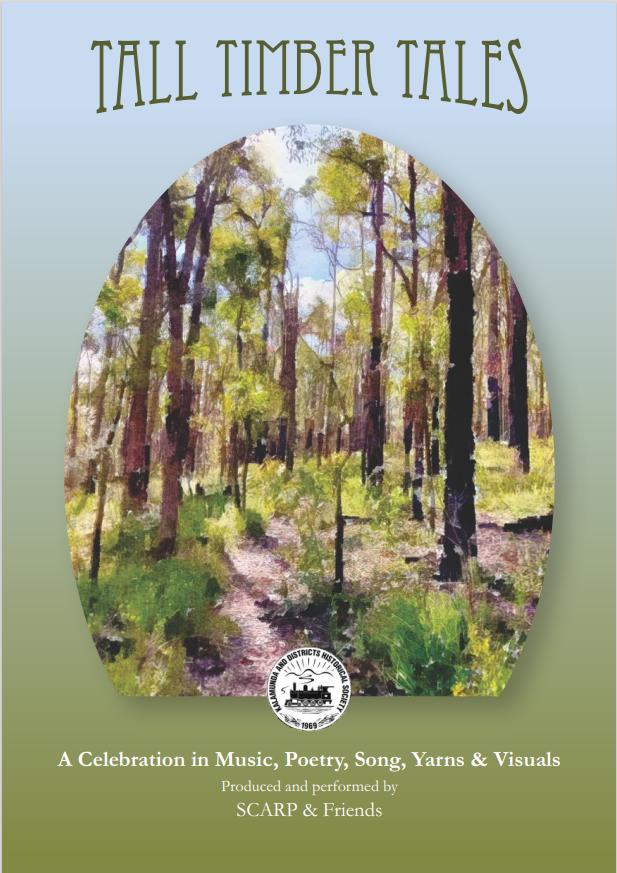
 Tall Timber Tales was produced by local resident Iris Jones in 2022.
Tall Timber Tales was produced by local resident Iris Jones in 2022.


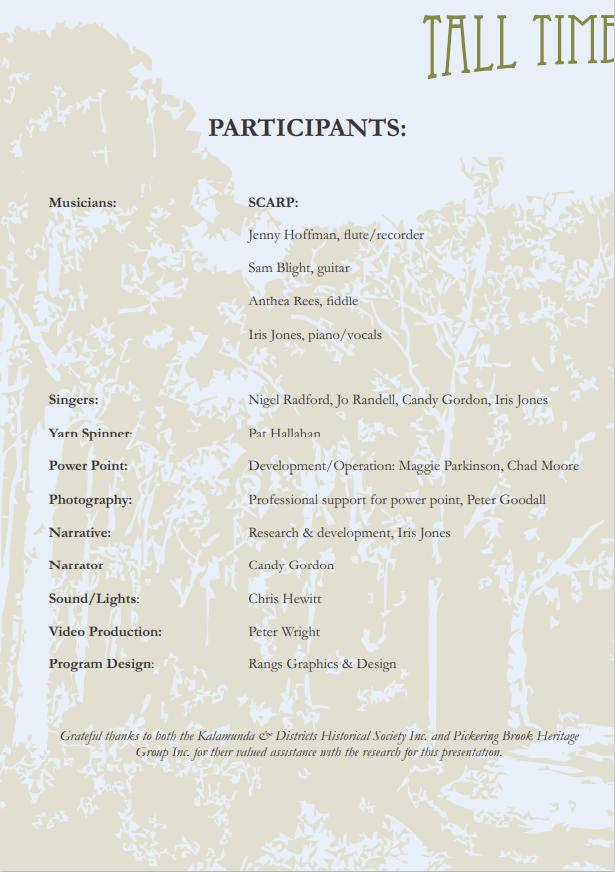
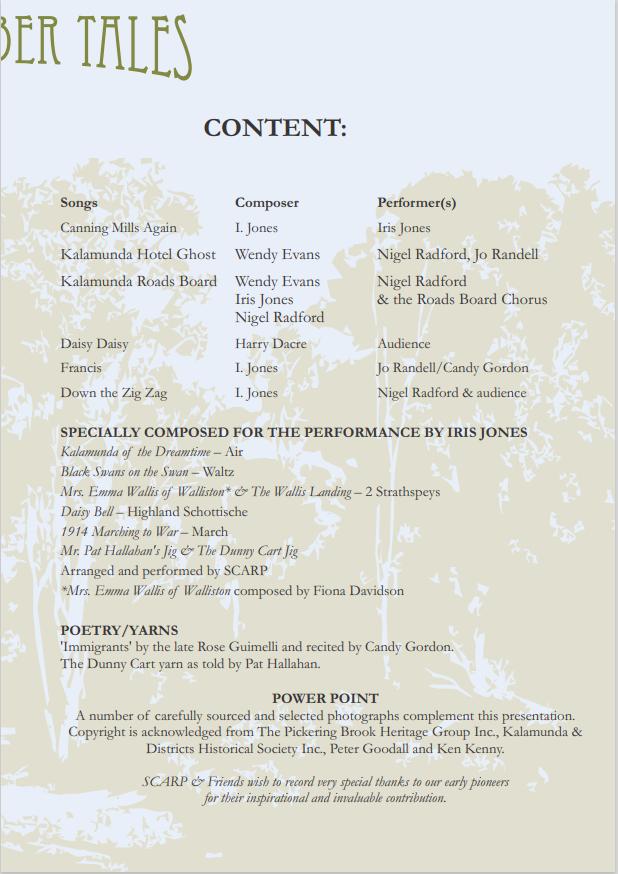
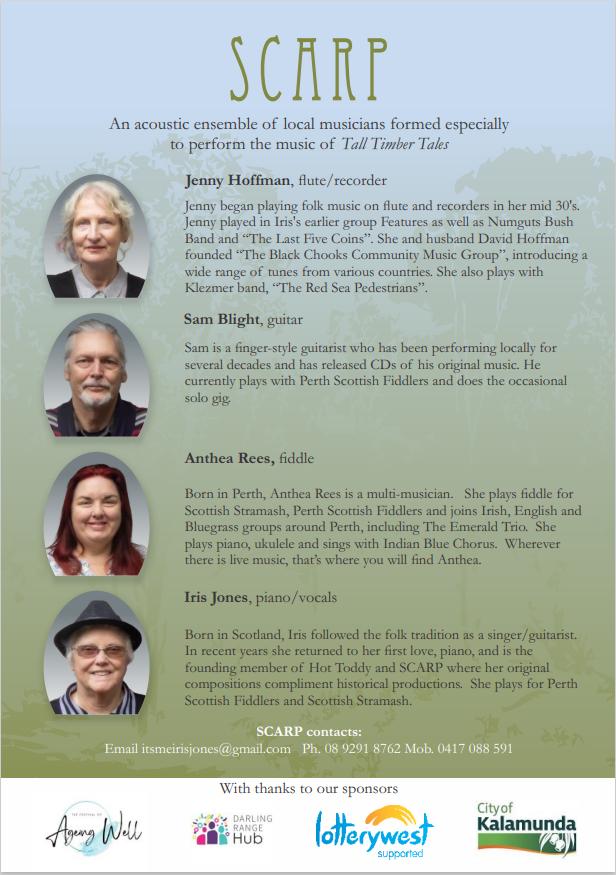
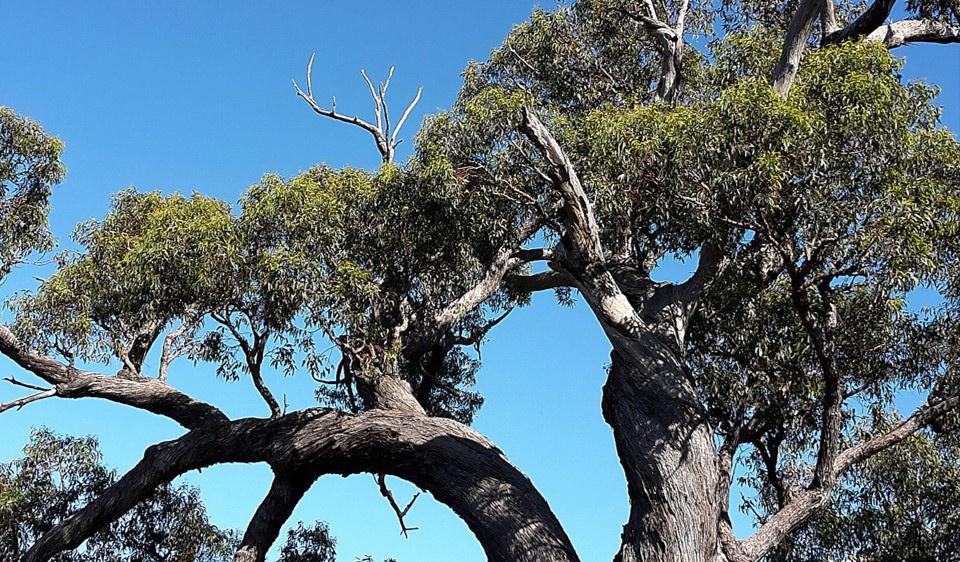
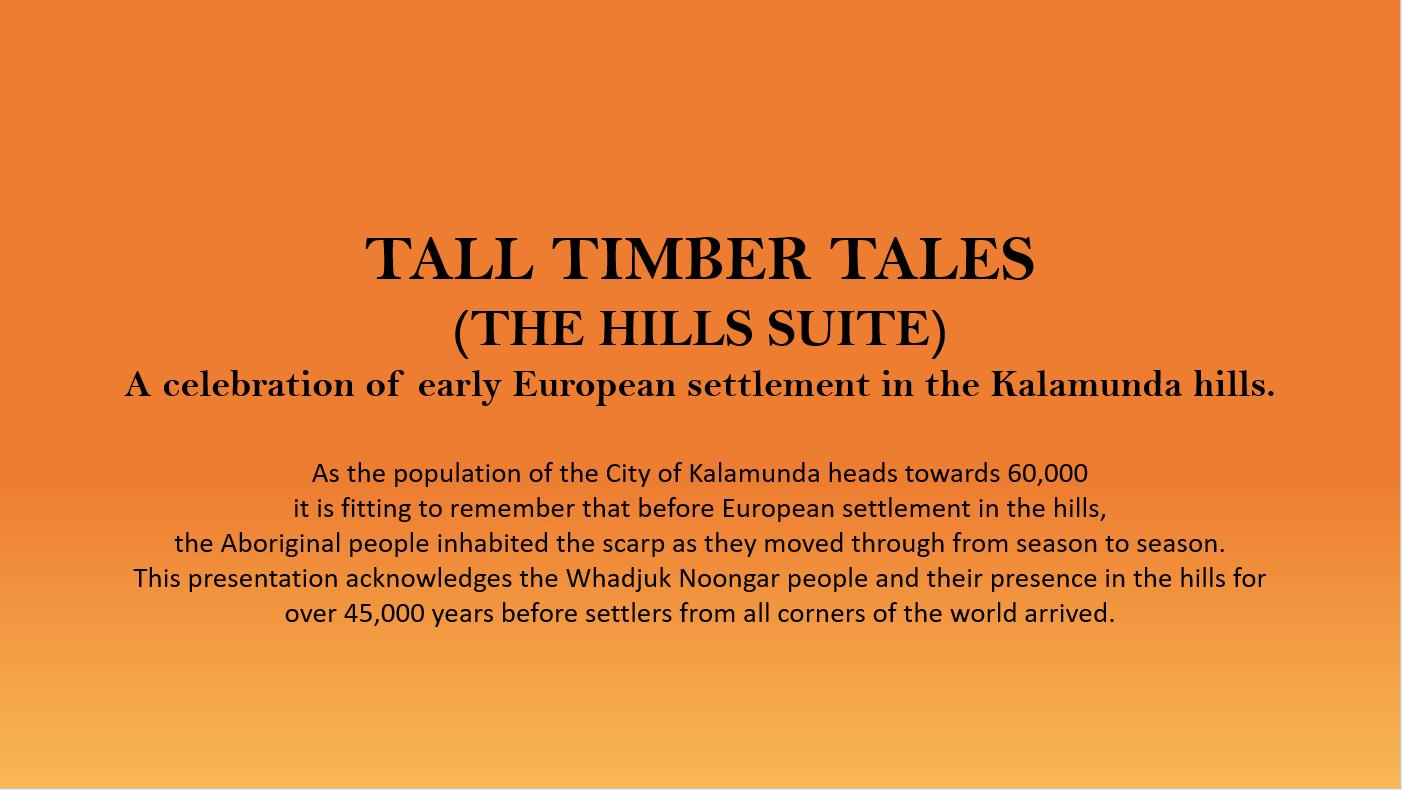
Candy Good morning, everyone SCARP and friends welcome you to this celebration of Tall Timber Tales All the music, songs and poetry you will hear today were inspired by the hard work and tenacity of our early European settlers, especially those who worked in the fledgling timber industry. Our story today focuses on life amongst the tall timbers of the jarrah forests on the Darling Scarp.
Immigration to Western Australia coincided with periods of depression in UK and Europe Many came with the conviction that there was not just work here, but a better life The mining industry in the goldfields and the timber industry offered such opportunities The timber industry, with a history spanning more than 180 years built many of our regional towns, communities and economies. The City of Kalamunda and surrounds is a classic example of this.
This new composition is entitled ‘Kalamunda of the Dreamtime’ and sets the scene for our celebration today
SCARP: Zig Zag Theme & Kalamunda of the Dreamtime Slow Air
With hindsight, we can now assess the environmental impact of the timber industry, not just within the Kalamunda hills, but throughout the South-West. Yet we cannot condemn these early settlers, many coming from poverty-stricken backgrounds, for wishing to provide a better life for their families
The mining industry offered large financial incentives, but came with serious health hazards, not the least of which was silicosis, commonly known as ‘miner’s complaint’. Many Italians working in Kalgoorlie along the ‘woodlines’ or in the mines of the goldfields became aware of this deadly lung disease and seized the opportunity to work in the timber industry Together with UK migrants, they took up the arduous work of tree felling and sleeper cutting in the Kalamunda Hills

One such migrant was Benjamin Mason. He was granted a licence for a year to cut timber on one square mile of land in what is now Carmel. With his partner Francis Bird, their dream was to provide Swan River mahogany (now called jarrah) to the world, and so on 1st May 1864 began the development of the timber-felling industry in the Perth Hills
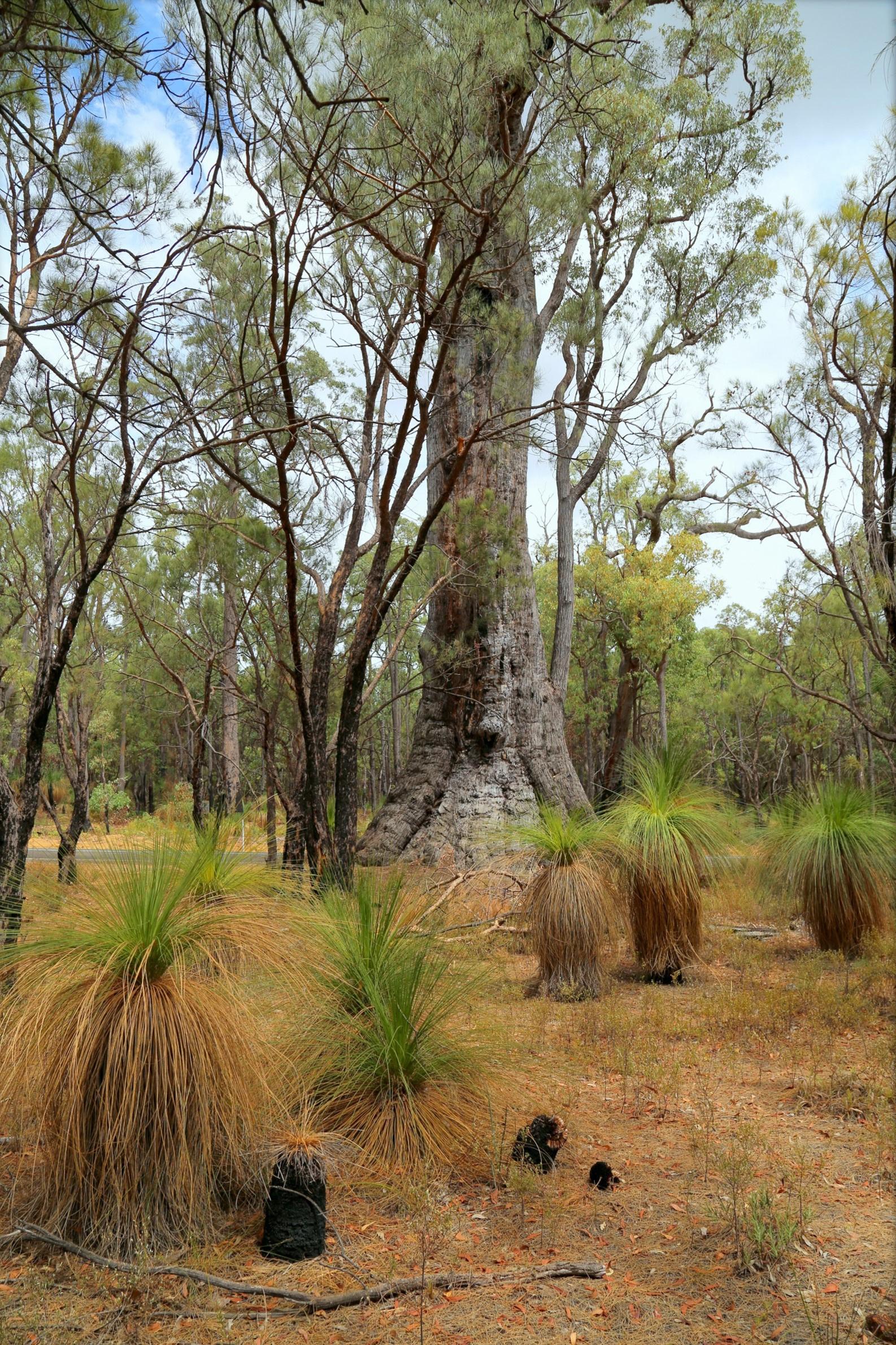
Two newcomers, John and Emma Wallis came to the hills in 1880 where John worked as a carpenter and wheelwright. They grew citrus fruit and strawberries which they took to the Wallis Landing, about a mile from their home. Their produce was loaded on to passing trains carrying sawn timber from the various mills.Emma Wallis baked bread for the mill workers and was also the local midwife. She rode on horseback all over the district to deliver babies, no doubt dozens of them
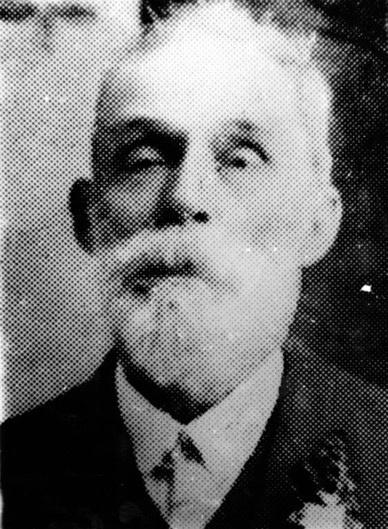
The area surrounding Wallis Landing became Walliston in later years in acknowledgement of their pioneering efforts. The next two pieces of music, both strathspeys, are dedicated to John and Emma. The first, Mrs. Emma Wallis of Walliston is followed by The Wallis Landing.
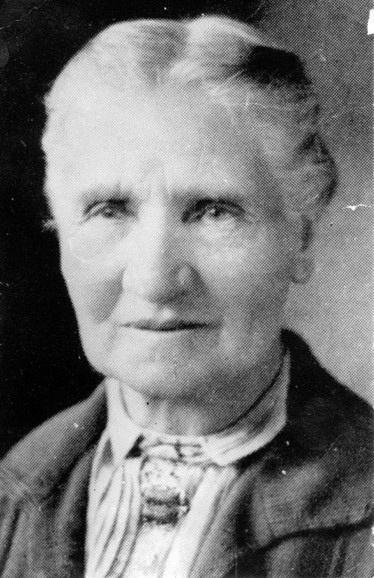 SCARP: Mrs. Emma Wallis of Walliston/The Wallis Landing
SCARP: Mrs. Emma Wallis of Walliston/The Wallis Landing
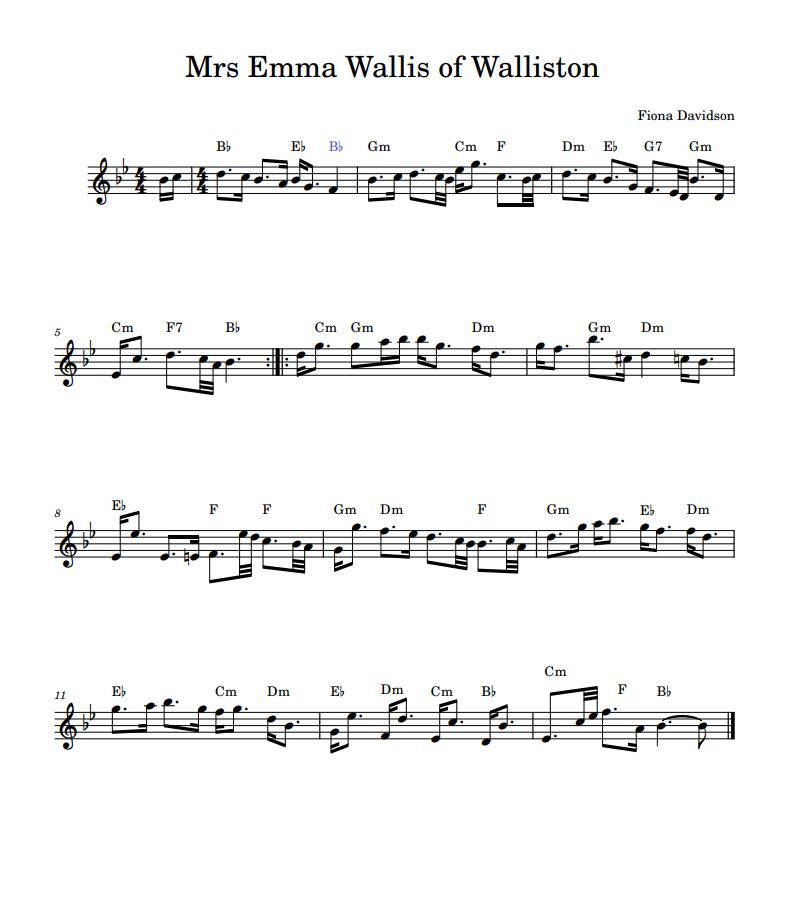
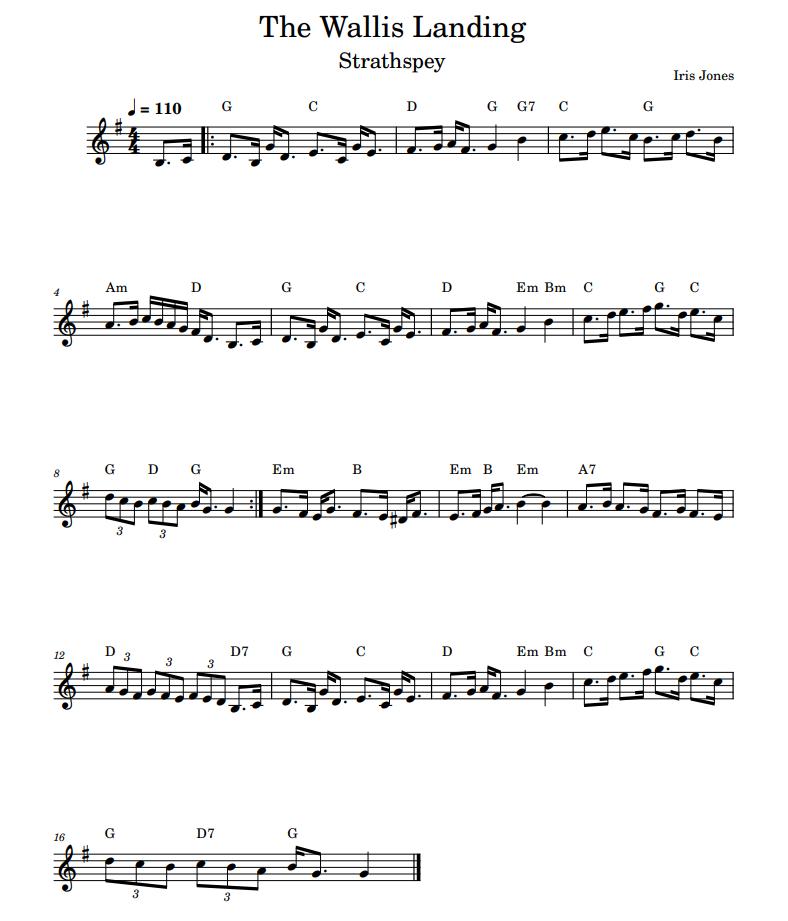
The jarrah trees grew straight and tall for mile upon mile Once felled and sawn into huge logs in saw pits, the task of moving them was overseen by teamsters using a fourwheeled whim drawn by horses or bullocks Here is what is left of one
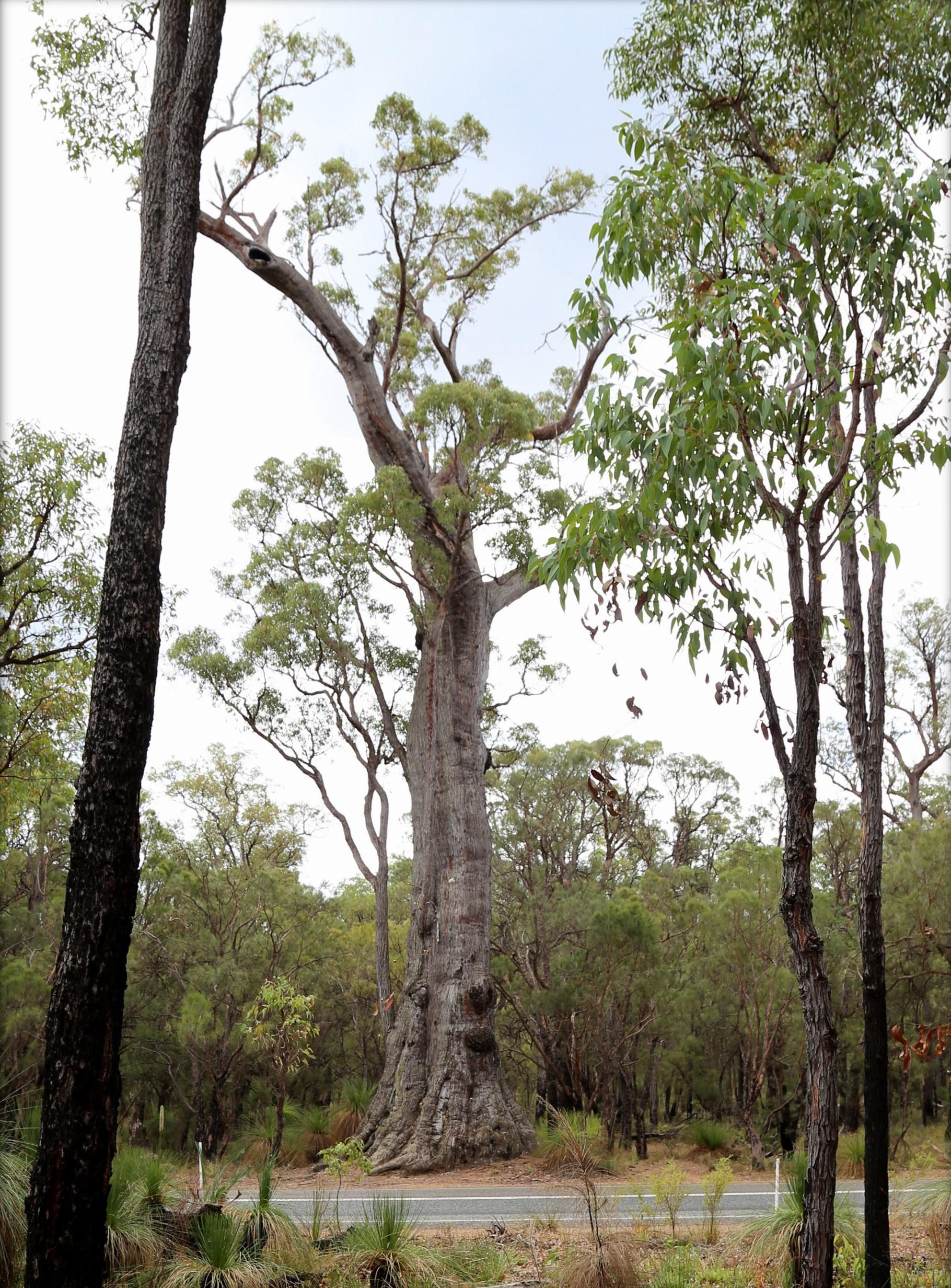
Legend has it that the more efficient two-wheeled whim was invented either as a result of a broken shaft, or the horses bolting for freedom, leaving both the teamster and his log stranded in the bush Either way, a giant two-wheeled whim was created which, when pulled forward, lifted the log off the ground with a serious of pullies and jinkers This innovation made life a lot easier for both man and beast
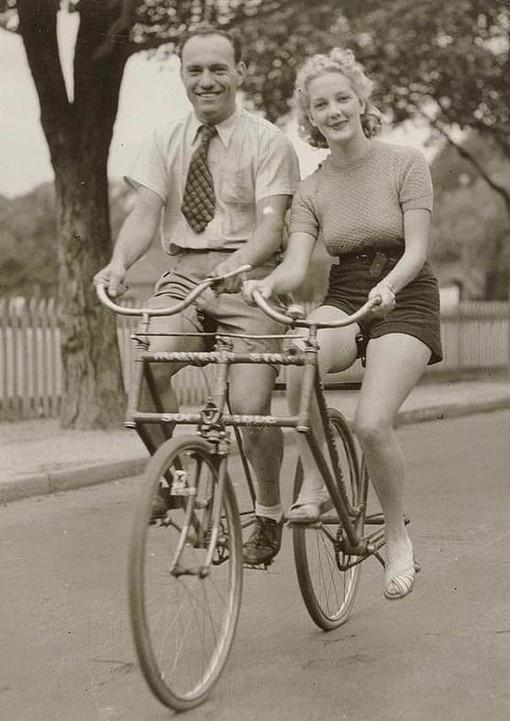
Here is ‘Daisy Bell’, a magnificent whim built by Richard Weston who is third from the left. This piece of music has been composed in his – and her honour. You may recognise an old melody in there, and if you do, please sing along!
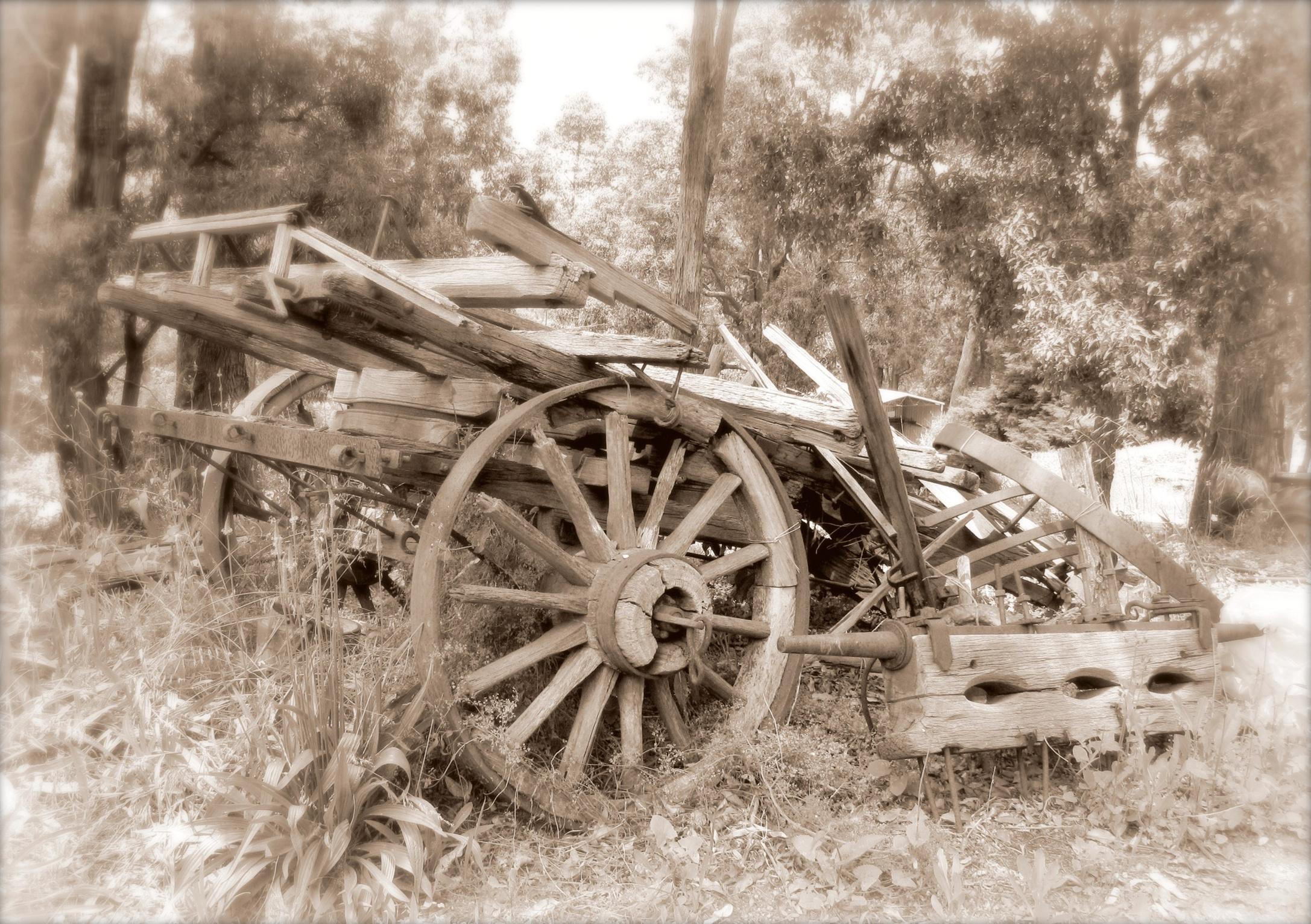 SCARP: Daisy Bell & Daisy Daisy song.
SCARP: Daisy Bell & Daisy Daisy song.
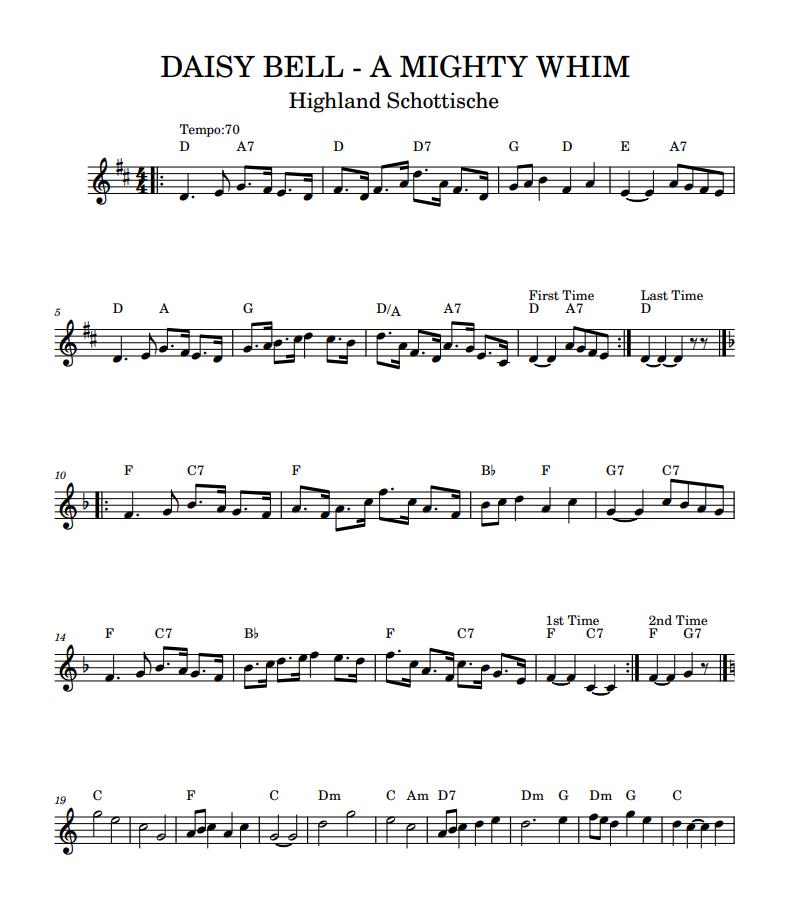
Felling the jarrah and getting it to the nearest mill was onerous but the real challenge was delivering it to the market A timber rail track was built to take the jarrah down to the Canning River to be transferred on to flat-bottomed barges We like to think the black swans paused to watch our hills jarrah glide slowly by The following piece, ‘Black Swans on the Swan’ captures the scene.
SCARP: Black Swans on the Swan
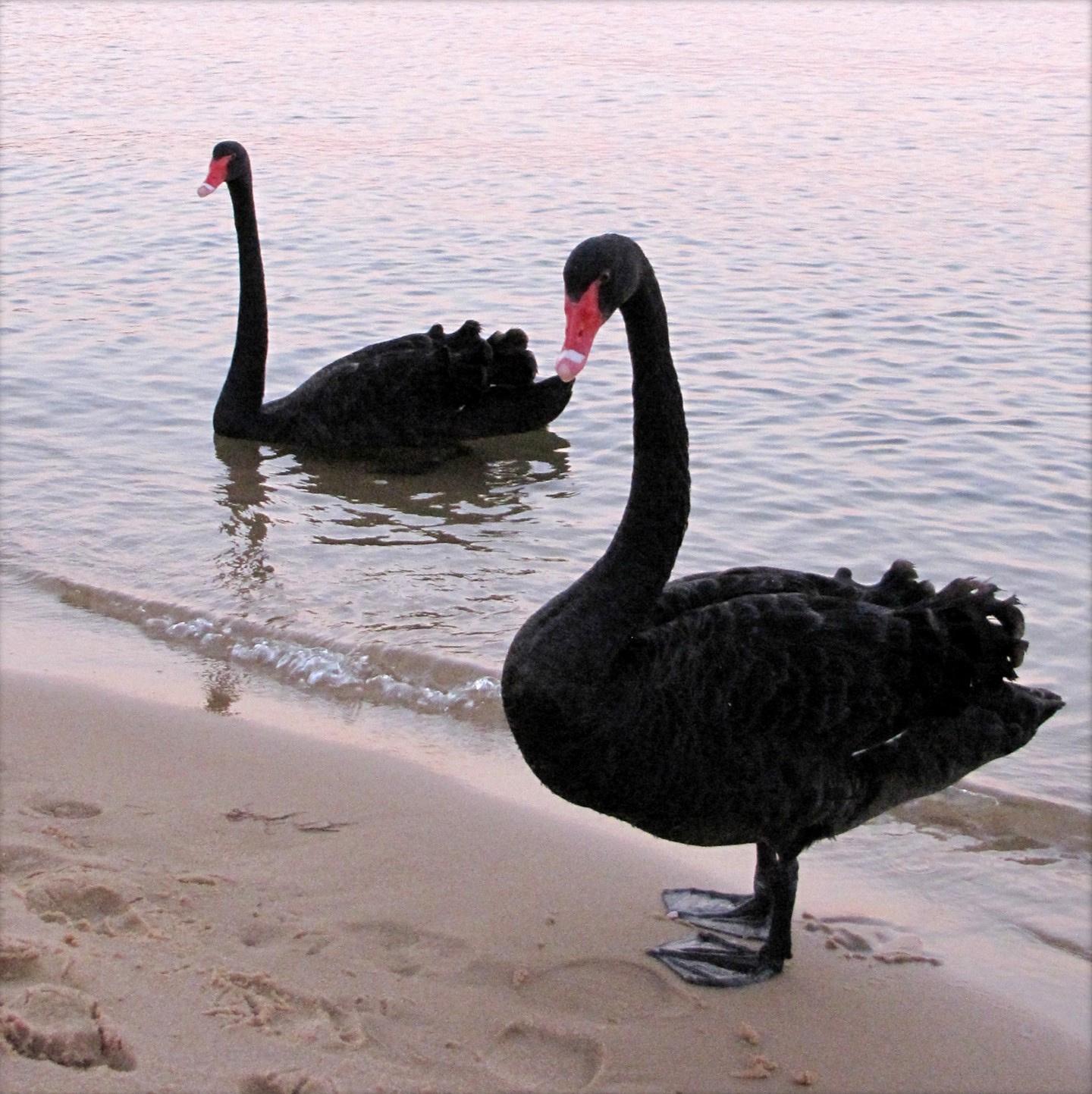

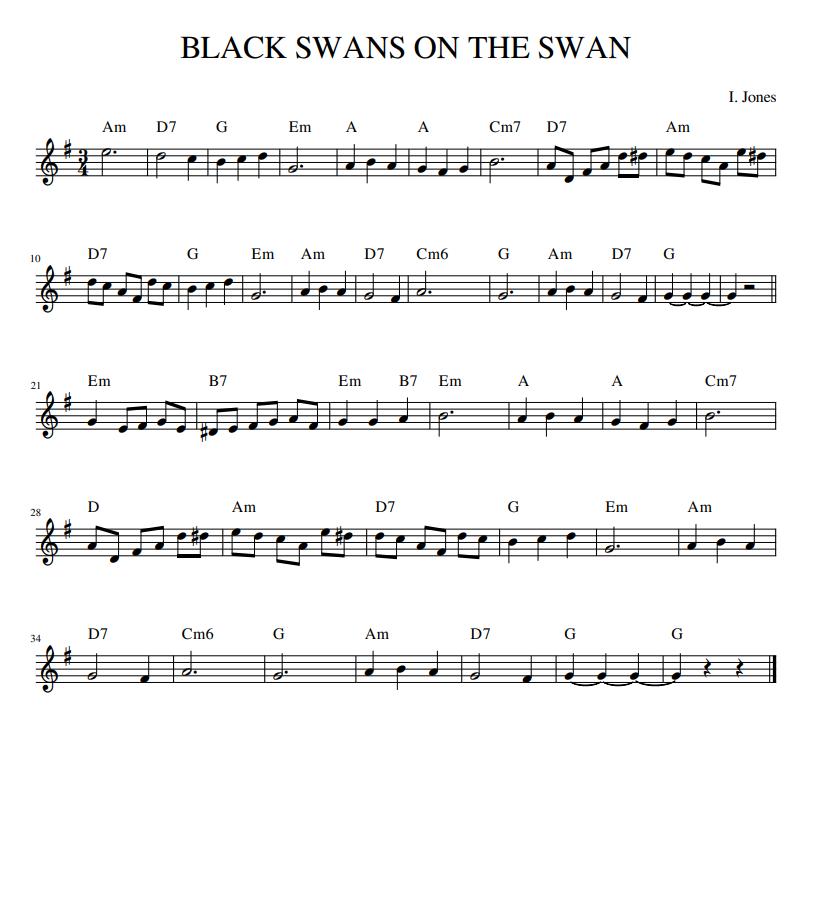
The shallow inlets on the Canning River often prevented barges getting in close enough to load the timber and get it out to waiting merchants. So, something had to be done. And it was. A railway was built from Midland up the Darling Scarp to collect the timber. But more on that later.
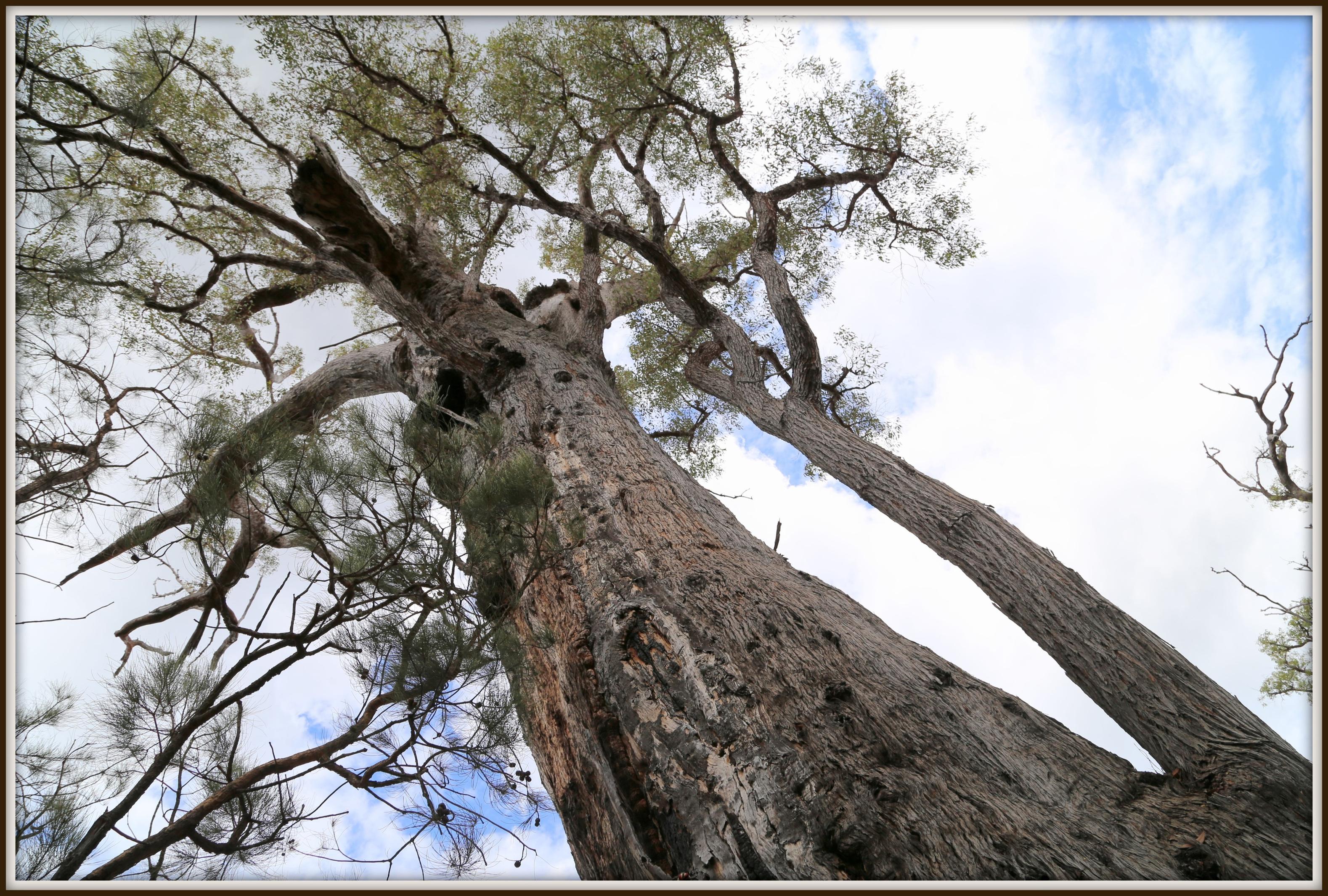
Small communities sprang up around the mills where workers and their families made the best of harsh conditions Daily life was not for the faint-hearted Roads were non-existent and were simply dirt tracks which became bogs in winter. Water was scarce; getting supplies was challenging, even if you were lucky enough to own a horse and cart, and an exhausting trek if without.
At the Canning Mills, only the foundations of the Mill Manager’s house remain to bear witness to what was once a hard-working community of around 400 souls Here is Iris to sing her dedication to the Canning Mills and the families who lived there
Piano, Flute & Iris: Canning Mills songSee the Mills of Canning I will take you there See the ghosts of Canning In the early morning air
See the Mills of Canning Hear the whistle blow Jarrah from the Canning To the valley there below
Bridge: Early in the morning, Canning mist arise Hazy winter sunlight brings the Canning Mills alive
See the Mills of Canning I will take you there See the ghosts of Canning In the early morning air
Key change into F major for flute solo
Key change for repeat of the Bridge back to Cmajor
See the wives at Canning Silently they stand
In the Hills at Canning Children hand in hand
And see the men of Canning Bullock, whim and train The Whining saws of Canning The Canning Mills again
Flute solo of the Bridge
See the Mills of Canning
I will take you there And see the ghosts of Canning In the early morning air

The building of the Zig Zag Railway from Midland up the Darling Scarp and all the away out to the Canning Mills opened up even more opportunities for development in the hills. Civil Engineer Edward Keane was central to this exciting venture which was completed in July 1891. Not only did it provide transport for timber down to the market, but it encouraged visitors to the hills The trip took some time of course as the train zig-zagged up and down, and the locals joked that if you planted tomato seeds on the way up, you could pick the ripe fruit on the way down!
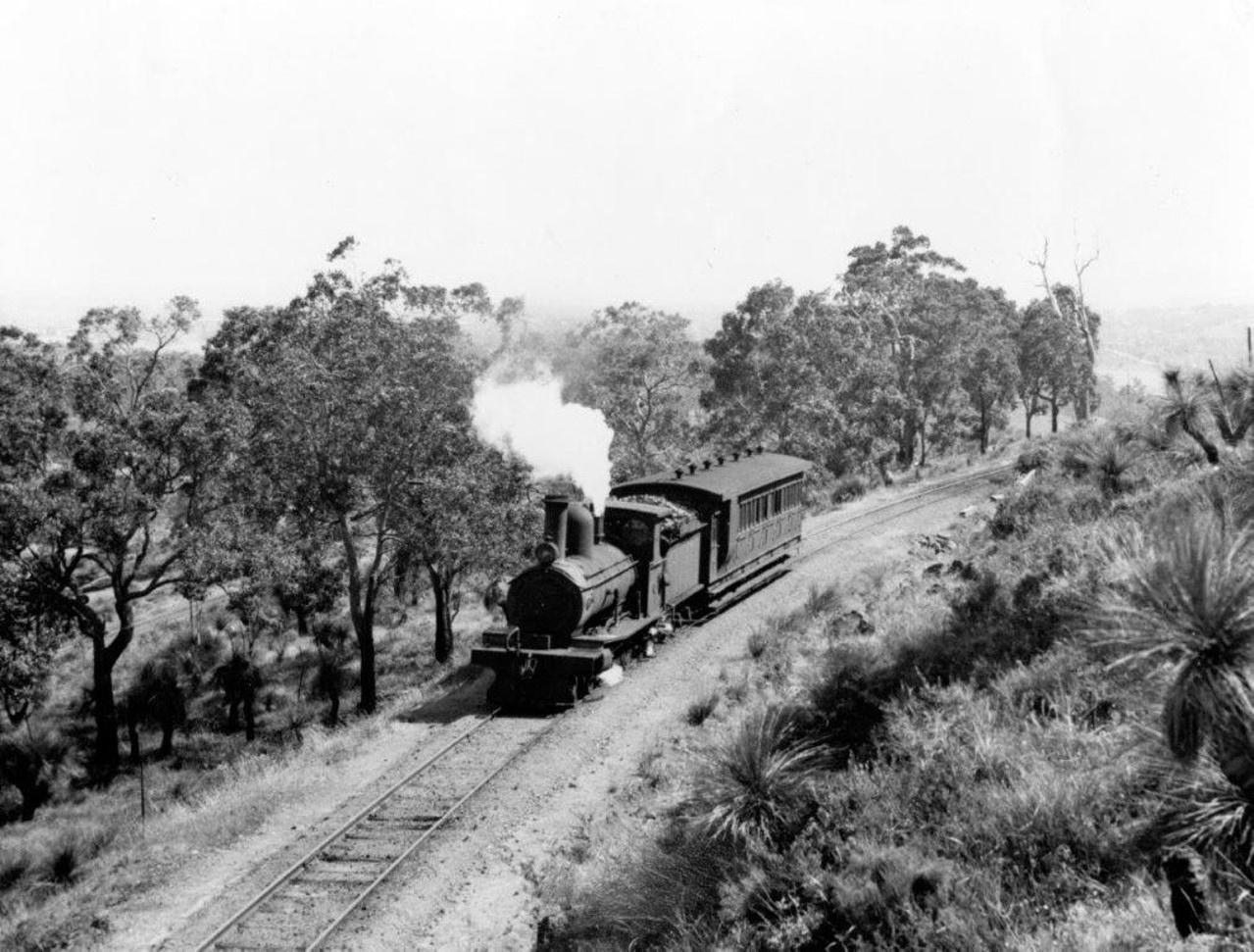
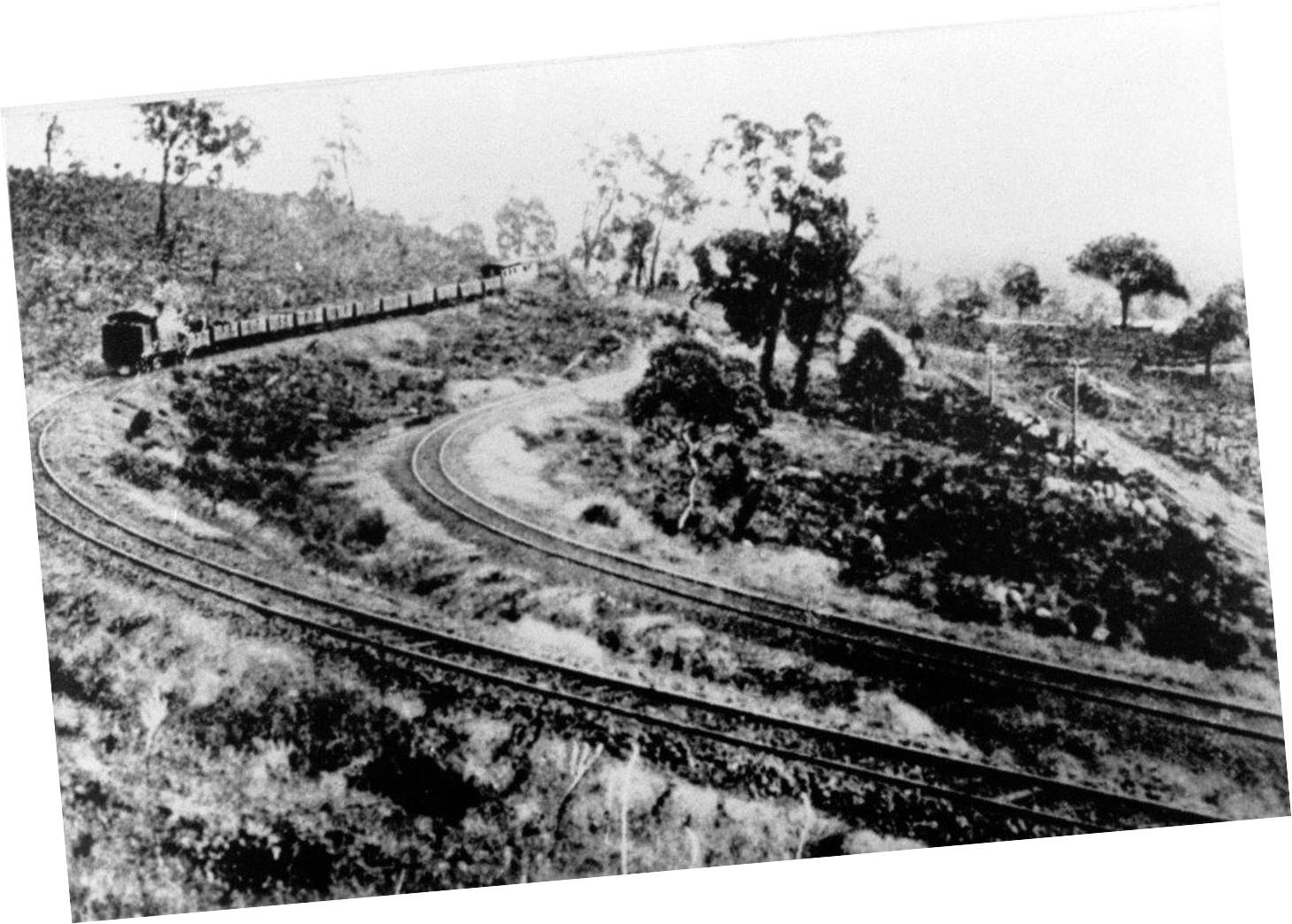
It had taken 30 years for reliable transport to be provided and it was an exciting day when the first train carried timber down the Zig Zag to the Midland railhead and onwards to the ports. The jarrah was then shipped off to the waiting world where the Industrial Revolution had created a huge demand for railway sleepers. It is true to say that our hills jarrah has left its footprint in many countries worldwide.
Meanwhile, the influx of visitors using the Zig Zag Railway up to the new Kalamunda Station, prompted the building of a hotel opposite There was even a ghost said to haunt the hotel and here’s Nigel and Jo to tell us all about it. This piece was written by the late Wendy Evans.
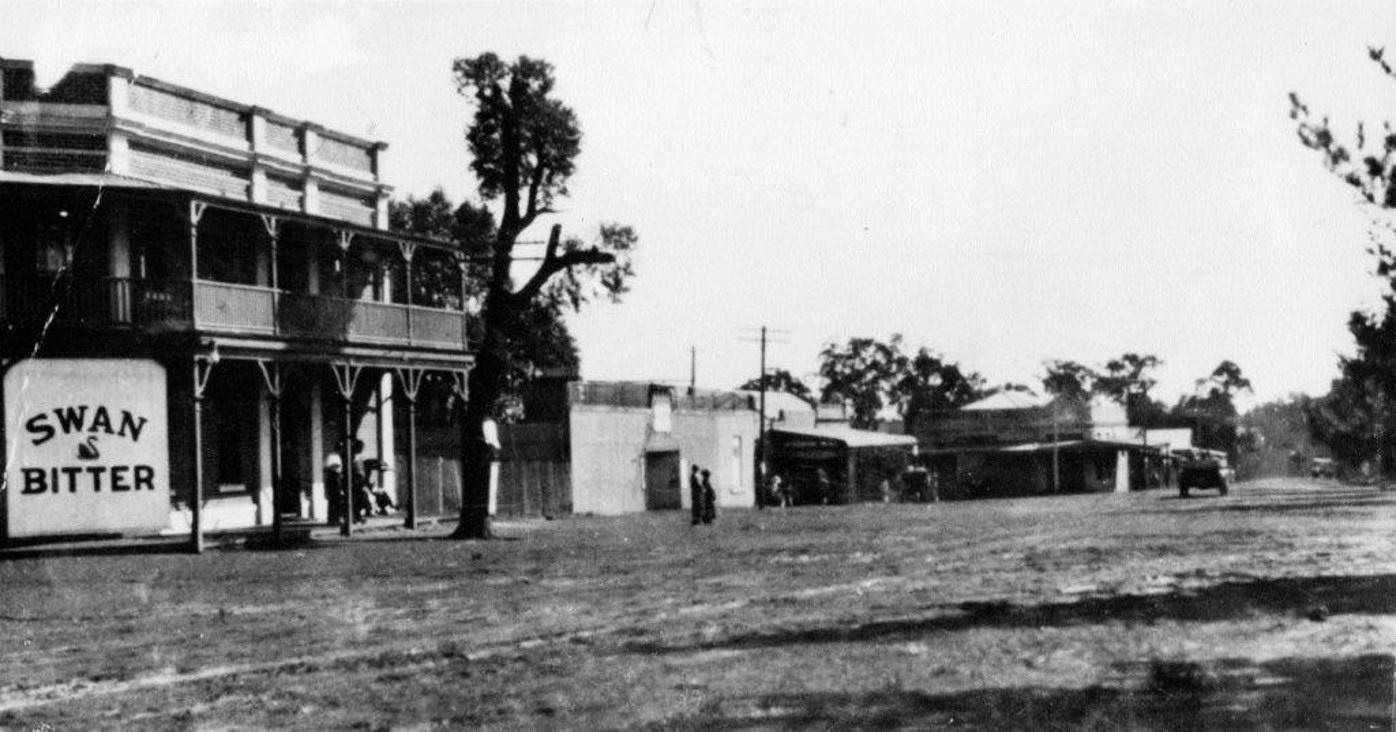 Poem/Song from Nigel & Jo – The Kalamunda Hotel Ghost
Poem/Song from Nigel & Jo – The Kalamunda Hotel Ghost
Composed by Wendy Evans 1980s
Amended 2022 Nigel Radford 2022
As performed 8th Nov. 2022 Jack Healey Centre Kalamunda
Chorus:
I’ve got the Kalamunda Hotel Blues
My hair’s on end, I’m shiv’rin’ in my shoes
If you’ve seen the spirits walkin’, it’s too late to put the cork in It’s and boozy-woozy ectoplasmic blues
The bar was hushed and silent and I’d just turned off the keg
When I felt an icy clutch upon my ankle, then my leg An eldritch scream then echoed, “Give me run or feel my powers” I said, ‘I’ll lose me licence serving spirits after hours”
Fred was sitting in the kitchen brewing up a night-time toddy When this pretty ancient apparition walked right through his body And she clasped him in a chill embrace. He now believes the rumours He said she wasn’t innocent, for she wore see-through bloomers
Bill spent the night in 24, where the lover killed his bird
He felt her chilly fingers and he thought it was absurd
He felt her naked body and he said she was a ten And the poltergeist that bumped in the night bumped him all over again
Oh let’s blame it on the ‘ghosties’ for it makes a lot of talk And it covers up the goings-on when kindred spirits walk As every gal and every ghoul knows, one thing must be said A night’s unbridled passion needs arousal from the dead
NB The music for the Chorus is scored. The verses are spoken to the following chords:
/C /C /EbG7/C C7/F /F /F /C / /F /F /C /A7 / D7 /D7 /G7 /G7 /
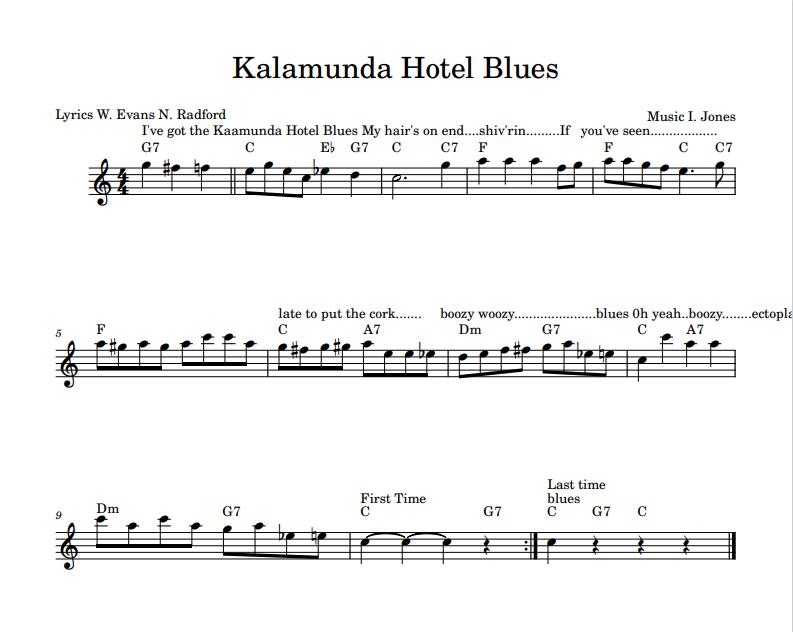
The Great War of 1914 to 1918 was to have a serious impact across Australia. There was no conscription, but nation-wide, men volunteered to fight Local records show that those who died were mainly from the timber industry, the railways, the orchards and those labouring in the district Their womenfolk, like others across the world, were left to carry on as best they could. This next piece is named ‘1914 Marching to War.’ A worrying time for those left behind.
The family of these two soldiers is remembered in the street name Schmitt Road in Kalamunda.
 Piano only - a few bars of ‘Pack Up Your Troubles in…’ followed by SCARP - 1914 Marching to War.
George and Dick Schmitt with their sister Annie
Piano only - a few bars of ‘Pack Up Your Troubles in…’ followed by SCARP - 1914 Marching to War.
George and Dick Schmitt with their sister Annie
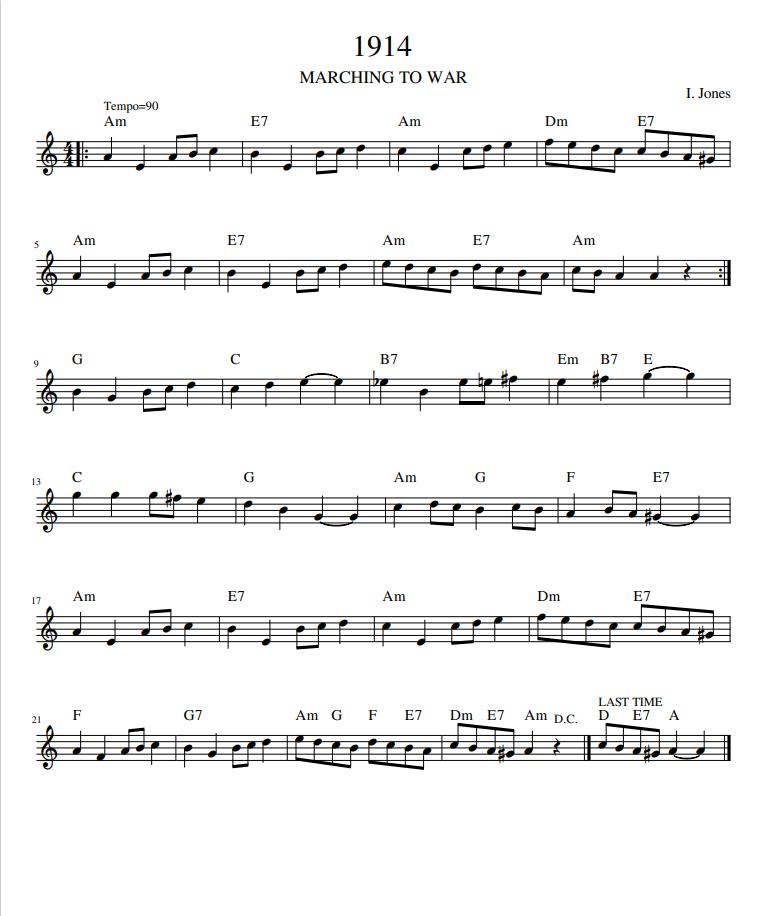
As the district developed and agricultural land became available to purchase, many Italians and other migrants took the opportunity to invest in a future in the hills. Their legacy stands today as you drive through these carefully nurtured and manicured valleys and orchards.
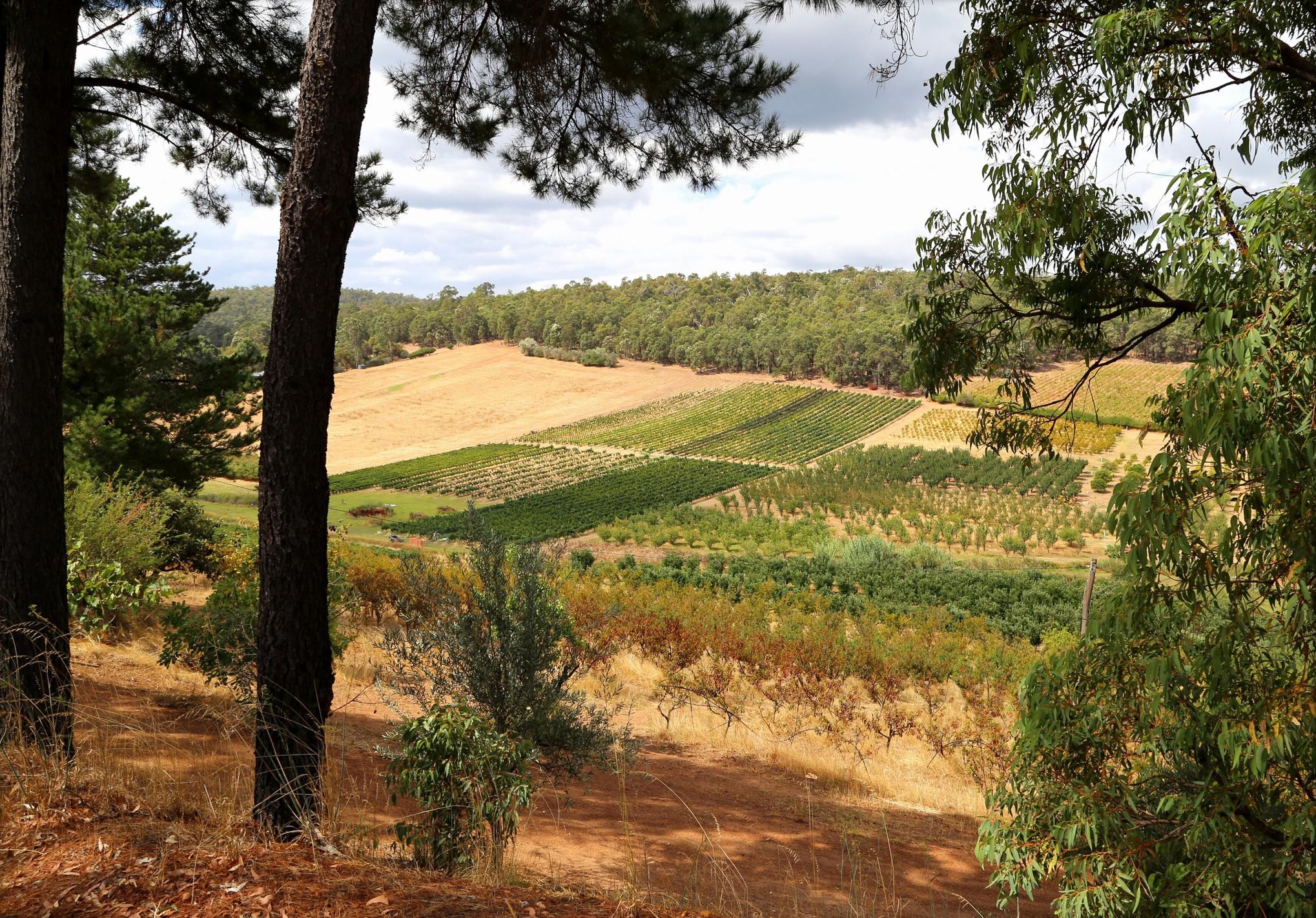
But it was a lonely, isolated existence here in the early days, as there were very few women or social opportunities. It was a hard life for a young man then as he toiled to make a living and provide for those in his homeland, with little cultural reward for his inner self These hardy migrants brought their skills, tenacity, innovation, and most of all their patience to this, their new land But they would never forget where they came from.
 Piano only - Few bars of Home Sweet Home
Piano only - Few bars of Home Sweet Home
Iris - ‘Homesickness’, a powerful emotion, drew many into deep and solitary sadness. Italians suffered more than most due to language barriers and racial discrimination It is a credit to their drive and determination that they overcame these considerable obstacles And through it all, they kept their culture alive as they do today This moving poem, read by Candy, was written by the late Rose Giumelli. It strongly reflects her family’s experience as migrants to the district.
Those who came before Into this land unknown Were heroes, for sure. By misfortune blown
From Lands in upheaval Poverty - Politics
Other forms of evil. They followed their instinct
To find a land of peace:Poor in amenities;Except Freedom’s feast A strange society
A cursed language;So unlike their own. And yet;- though strange;Was in Freedom sown
The above poem was donated to the Tall Timber Tales production by Beverley Giumelli. It was written in 2011 by her mother, the late Rose Giumelli, and was read by Candy Gordon in the performance.
Poem by Rose Giumelli read by Candy Gordon.Candy - After the Great War the district was now managed by the Darling Range Roads Board whose main interest was the Three R’s - Roads, Rates and Rubbish. I am sure there were some interesting Minutes from the Roads Board when a Dunny Cart tipped over on the Kalamunda Road Here is Pat Hallahan to tell this sad tale
Here are two new jigs for you The first is dedicated to Kalamunda historian Mr Pat Hallahan, followed by ‘The Dunny Cart Jig’ If you feel a dance coming on, go for it!
SCARP: Mr. Pat Hallahan’s Jig/The Dunny Cart JigThat new jig was all over the place – a bit like the contents of the Dunny Cart!
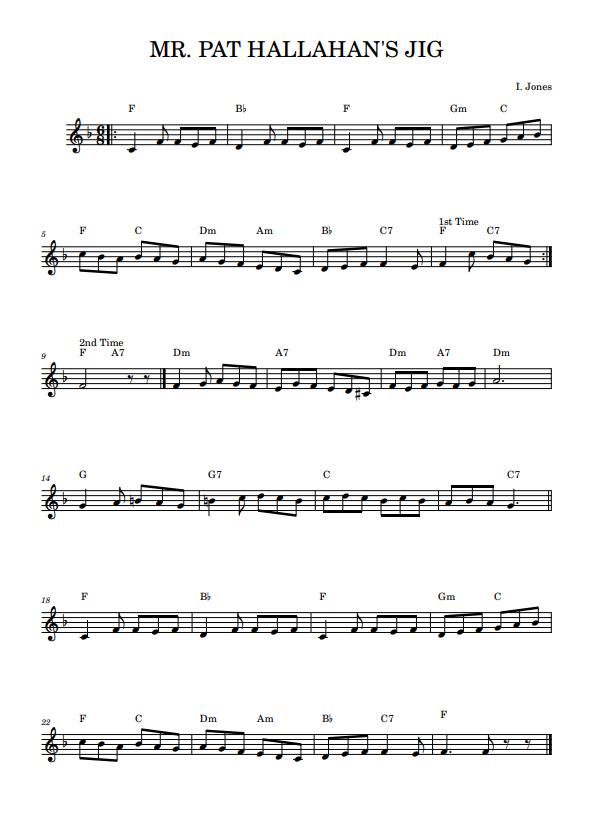
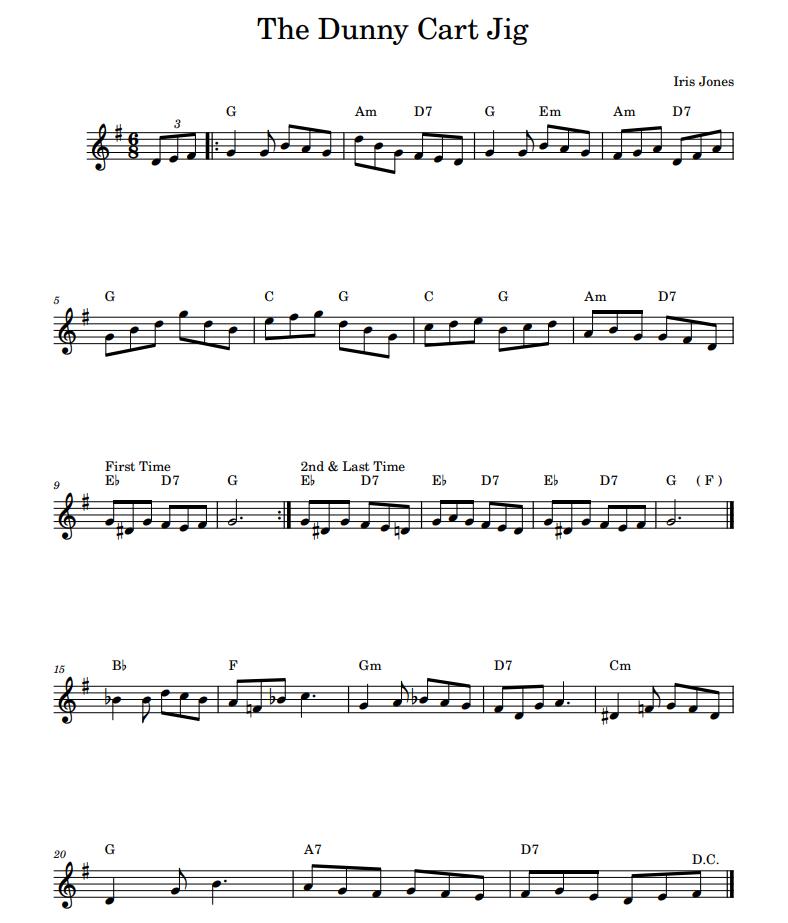
Local government across Western Australia blossomed everywhere during these times, and those elected to serve this third tier of government took their responsibilities very seriously indeed We are delighted to welcome here today, some illustrious Roads Board Councillors to explain their vital role to us Of course, any resemblance to our own Roads Board or the current Kalamunda City Council is purely coincidental. Purely coincidental!
Iris - Thanks for that Councillors. Don’t call us. We’ll call you.
Nigel & The Roads Board Chorus: The Kalamunda Roads Board(OR a Councillor’s lot is not a happy one)
Composers: Lyrics Iris Jones, Nigel Radford 1980’s Amended 2022 Music I. Jones
We are the members of the Kalamunda Roads Board
We are the pillars of our own society We are the members of the Kalamunda Roads Board
And we’re as influential as we care to be We will gather up your money and guard it with our lives And if you care to criticise us, we will cut you down to size ‘Cos we’re the most important people in your tiny little lives From the Roads Board – are we.
Now in order to determine how we’re steering
We have put a little Planner in our midst And we’ve asked him to liaise with Engineering While we’re propping up the bar and getting pissed Our modus operandi is way beyond comparing We are planning lots of tourists, lots of parking, and aged caring And we’re redirecting all the bloody traffic to Mundaring From the Roads Board – are we.
On the question of the arts in our community
Now we must be very careful where we sit It is certain there are parts of our community Somewhat lacking in their culture, we admit In the Mall there’s something missing. We are sure you will agree It needs something arty-farty, for all the world to see Yes! We’ll create a mighty statue of the CEO and ME! From the Roads Board, are we
Now’s the time to vote for US in the election You’re aware our reputation’s squeaky clean For elections are community reflections We are honest. We’re good-looking. And we’re GREEN
With the talent and the cunning and the money and the nerve We’ll turn all the Council Offices into A Reserve And rest assured that you will get - the government you deserve! From the Roads Board – are we
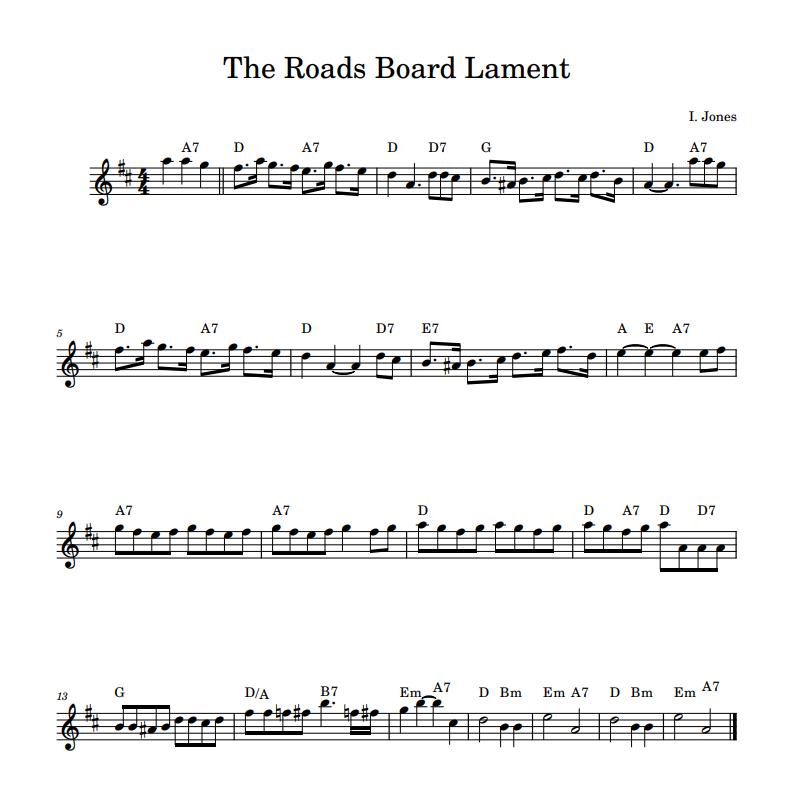
Candy - Transport became a lot more sophisticated as the new century progressed and the first Model T Ford in Pickering Brook was owned by train driver Harry Catchpole. The townsfolk waved as he drove by - and no doubt Harry waved back. Here he is with his family in his prized possession. However, there was some difficulty negotiating these cars up the steep incline into Kalamunda, as the gravityfed fuel carburettor often caused the Model T to suddenly grind to a halt Once again there was innovation in the hills Drivers simply turned their vehicles around and entered Kalamunda – in reverse!

Iris - There are many descendants of our hardy pioneers still living in the hills of Kalamunda today, and they are justly proud of their ancestors. Sadly, one little fellow, baby Francis Weston, who was born in 1876, lived for only two days and was buried in a carefully crafted bush grave, not far from the Mason’s Mill settlement. His quiet and peaceful resting place is still lovingly tended by the Weston family today. This song, sung by Jo and Candy, is from a poem by historian J F McNamara, and is dedicated to his memory
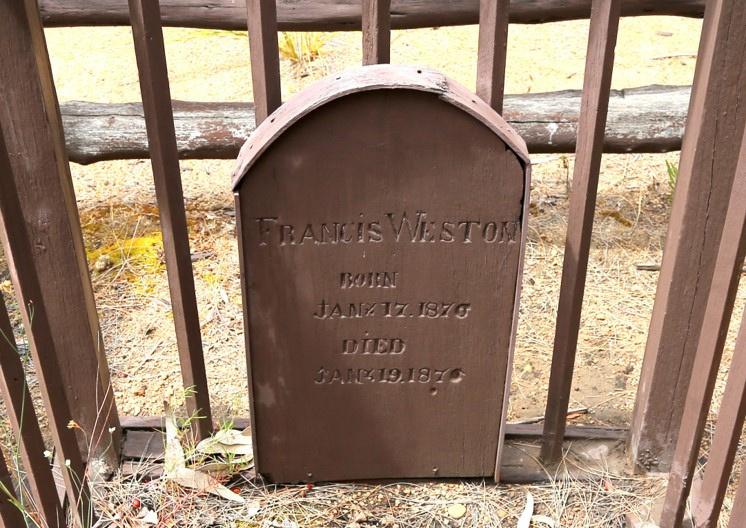
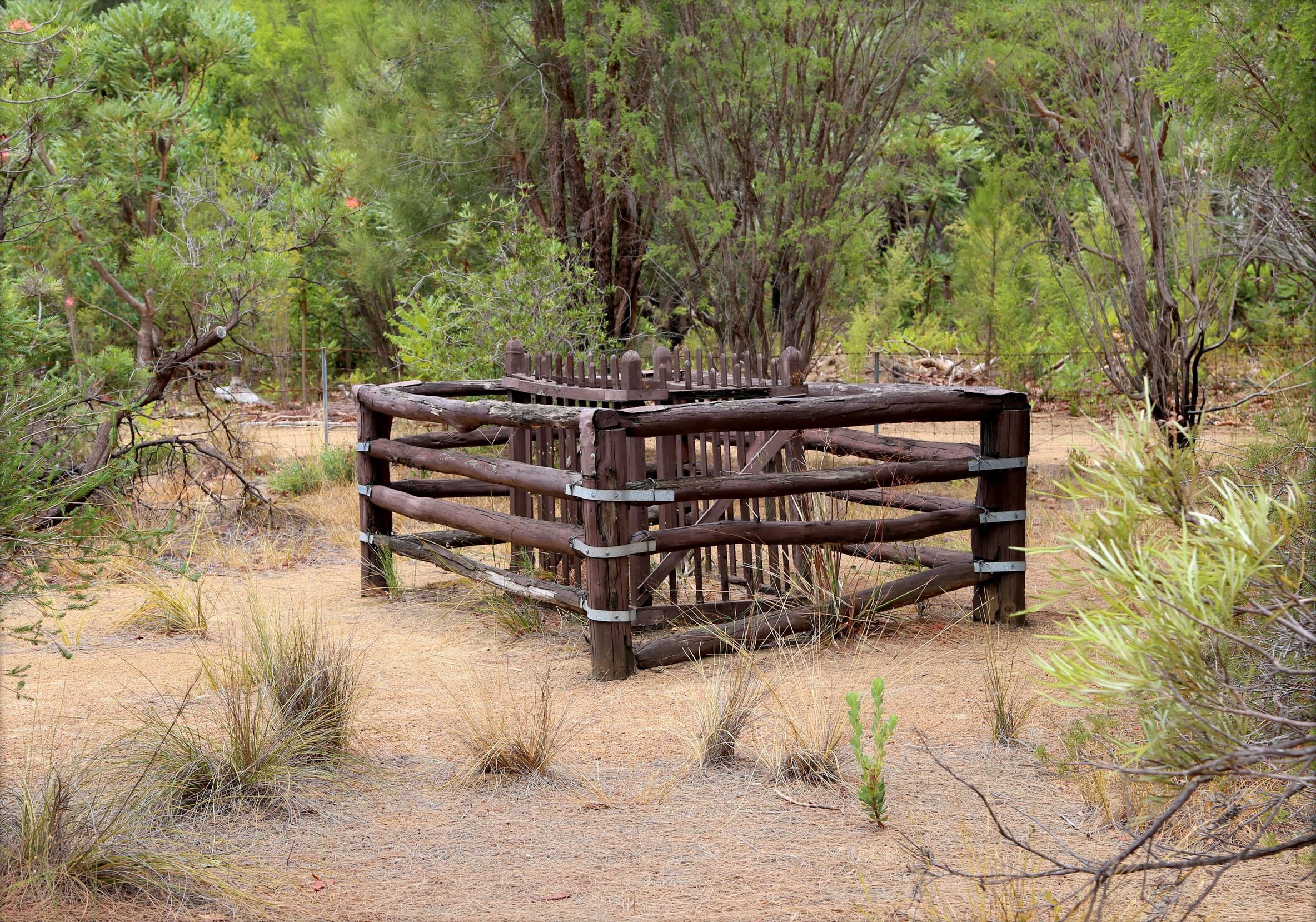
The east wind is wailing at Carmel today And the forest is singing of wind and of wave
The she-oaks are sighing, the tall jarrahs sway
By the lonely bush grave there at Carmel
The son of true pioneers sleeps in this plot For more than a century here he has lain Soothed by soft lullabies over his cot
In the lonely bush grave there at Carmel
Chorus: Francis, Francis
The east winds they echo your name And the shea-oaks are sighing, tall jarrahs sway
By the lonely bush grave there at Carmel
Reflect on his family in those far off days
His pioneer mother so faithful and true Thy trod the blue Ranges with their rugged ways
By the lonely bush grave there at Carmel
The She-oaks bend lovingly over his bed, A Mason’s Grevillia is spreading her bloom They sigh their sad lullabies over his head
By the lonely bush grave there at Carmel
Chorus
But silent I stand by the little bush grave Ant thin of the days that have long passed away And of the true pioneers and their women so brave And the lonely bush grave there at Carmel
Chorus
Original Words F.J. McNamara copyright 1961 Music I Jones copyright 1986 Amended words & Chorus (with apologies and thanks to F J McNamara) I Jones copyright 1987
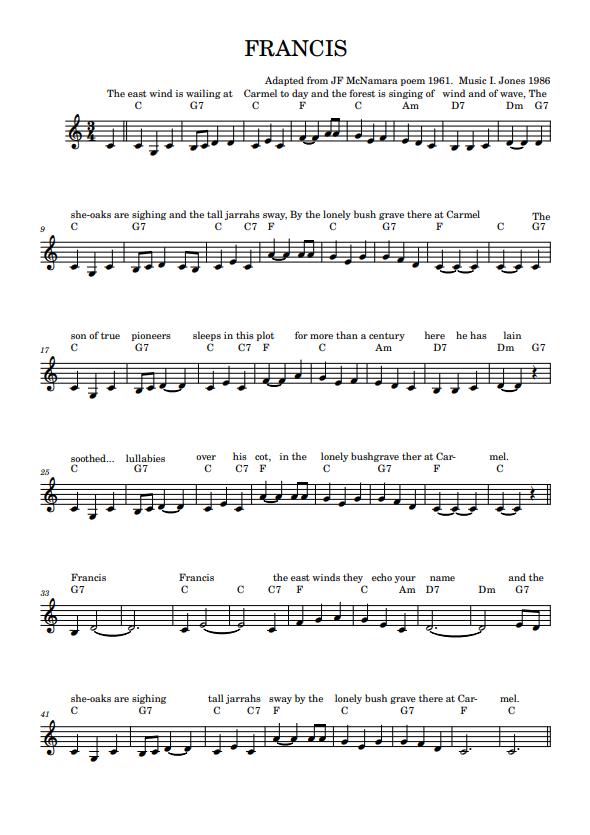
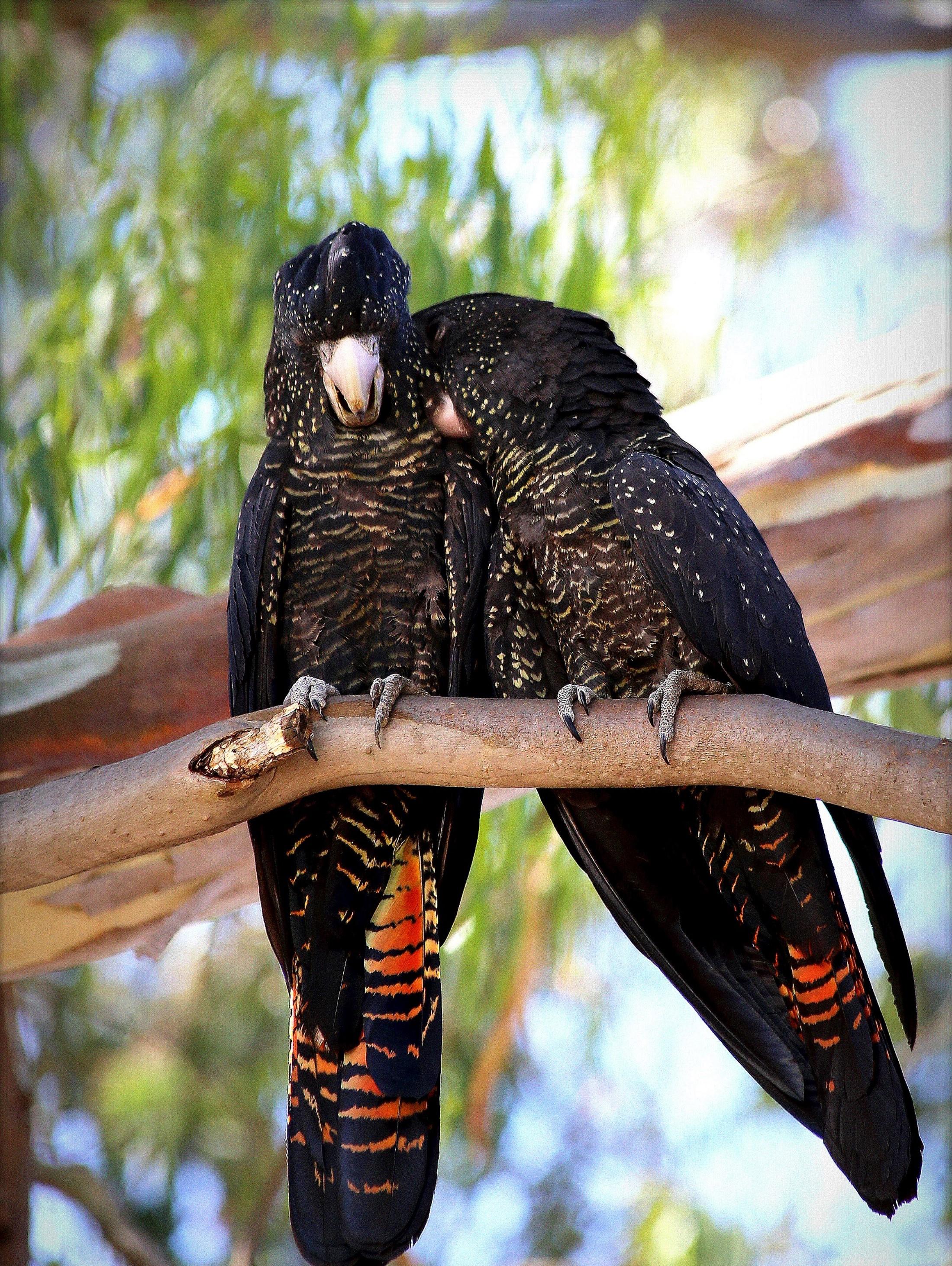 Candy - And so, we come to the end of our Tall Timber Tales
Candy - And so, we come to the end of our Tall Timber Tales
And we have only scratched the surface today. We hope we have given you just a small insight into the life and times of our early pioneers in the Kalamunda hills, and the hardships they faced in those challenging early days Please join us in our last song, and thank you for listening and for having us here today

SCARP plus singers & all: Down the Zig Zag song.
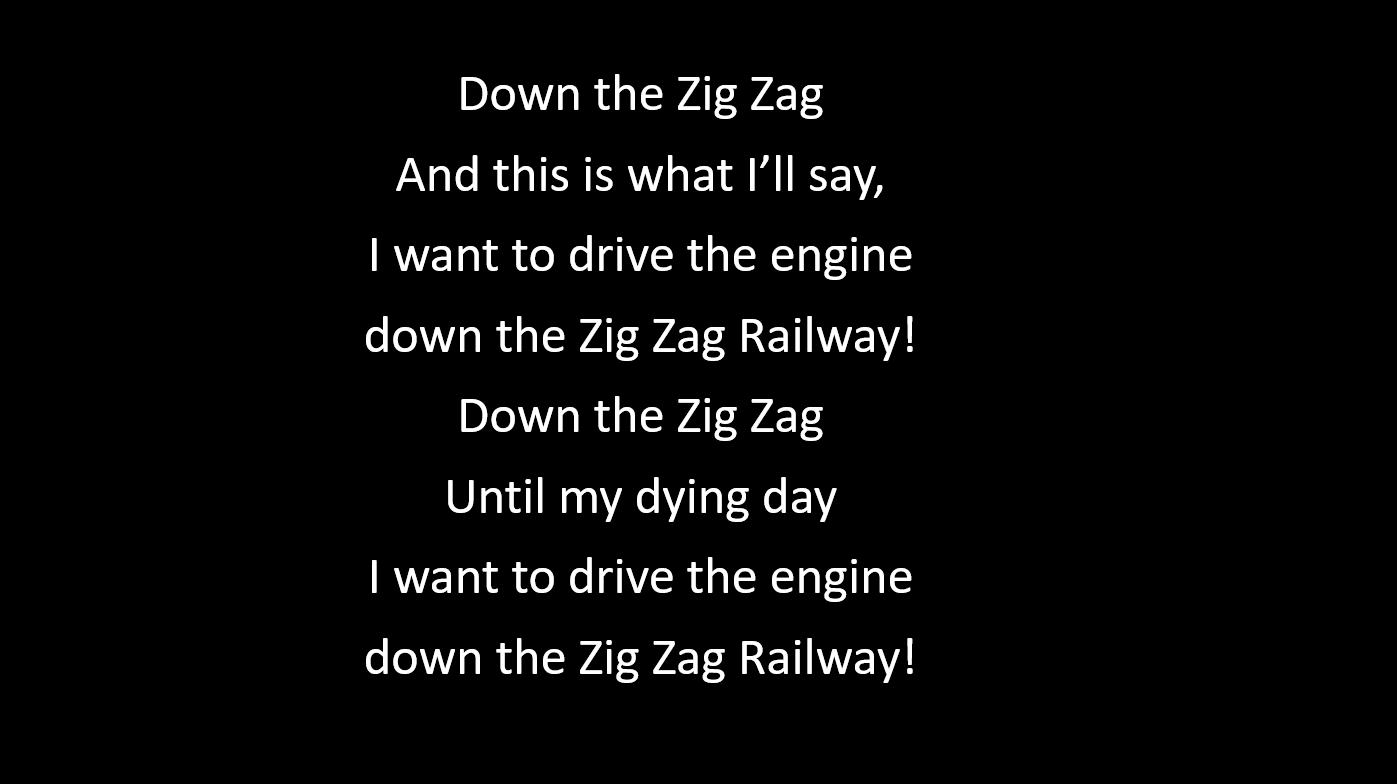
(Iris Jones 8/12/1986)
My father was a timber man, he worked at Mason’s Mill My brothers they are loggers down at Canning, logging still
But when my schooling’s over, this is what I’ll say I want to drive the engine down the Zig Zag Railway
Chorus: Down the Zig Zag, this is what I’ll say I want to drive the engine down the Zig Zag Railway Down the Zig Zag, until my dying day I want to drive the engine down the Zig Zag Railway
Me name is Harry Catchpole, I’ve a splendid Model T The very first in Pickering Brook and a joy for all to see The transport of the future and a wonder of the day But I’d rather drive the engine down the Zig Zag Railway
I’ll fire up ‘Puffin Billie’, a miracle of power She hauls a hundred tons of logs at 30 miles an hour A puffin’ and a blowin’ and a whistlin’ all the way She’s a credit to the driver on the Zig Zag Railway
Away from Karragullen, with empty trucks behind We’ll fill ‘em up at Canning where the greedy saw mills whine Roll on to Kalamunda by the middle of the day Then blow the whistle loudly, down the Zig Zag and away
And one day when I’m married with bairnies two or three When planning for the future, they’ll surely turn to me “Now shall I be an Engineer, a ‘learned’ of the day?” I’ll tell them “Drive the engine down the Zig Zag Railway”
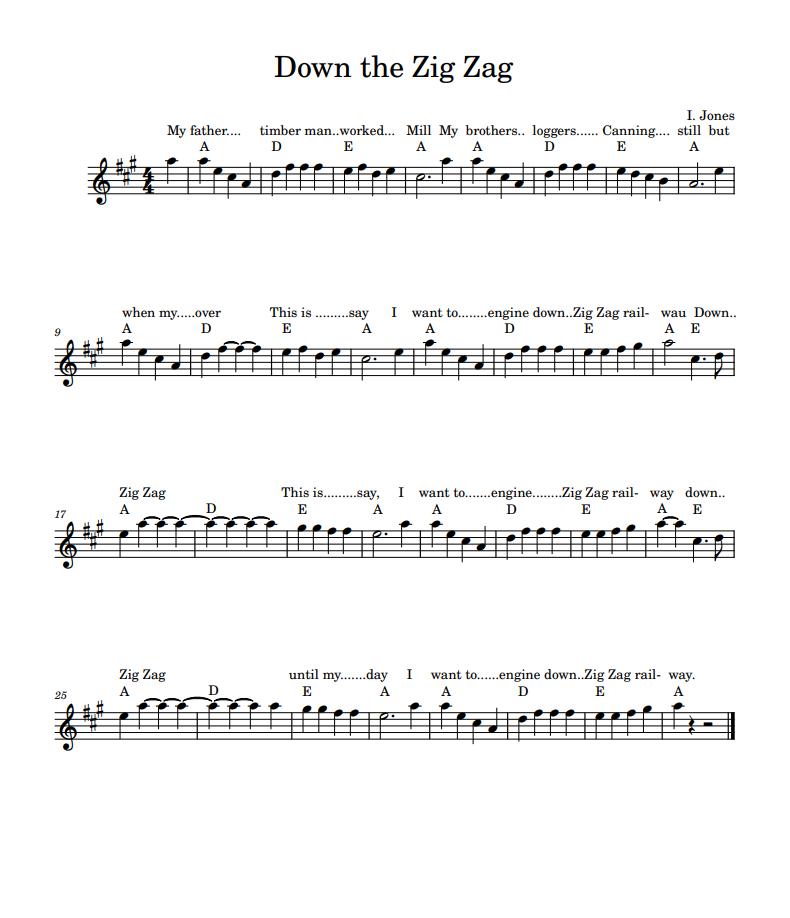
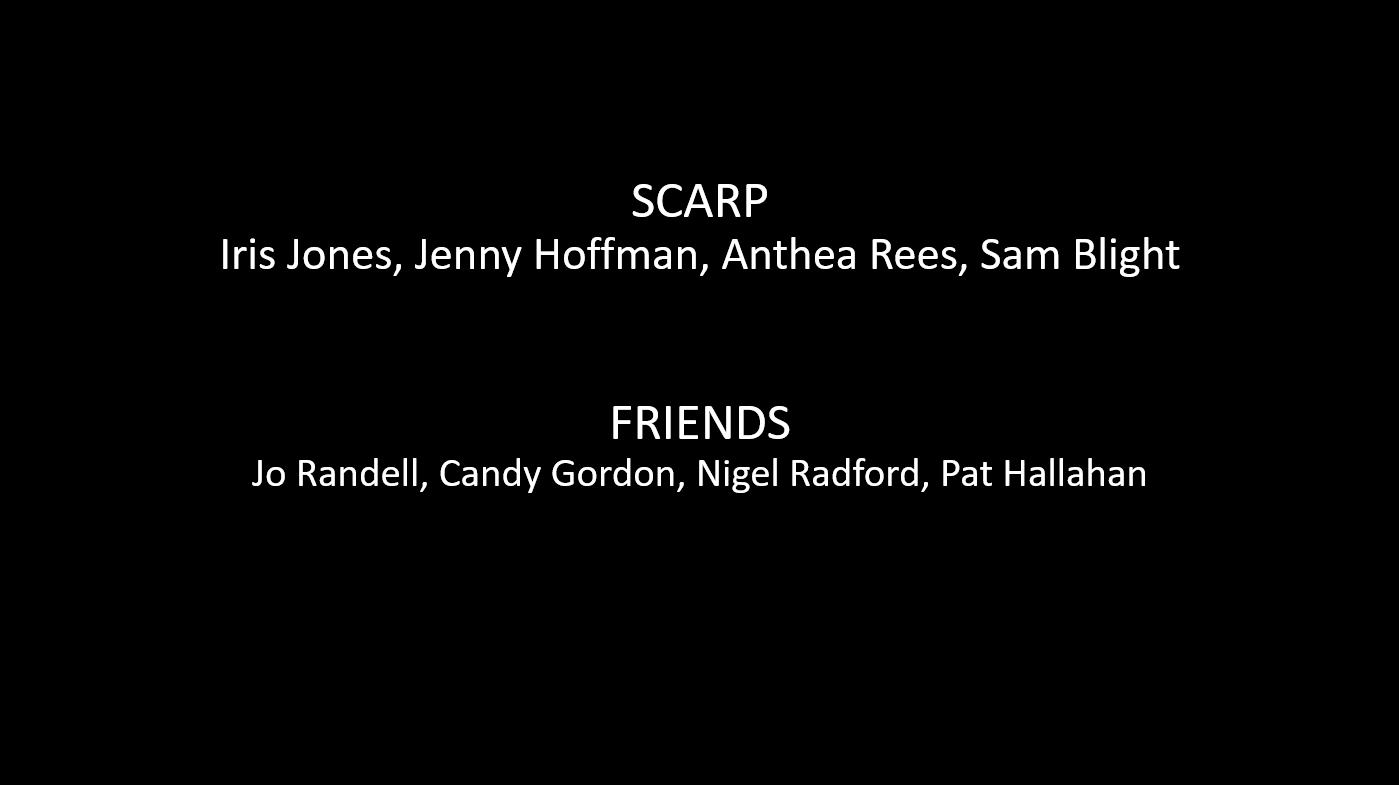 Candy - Thank you for having us here today and please join me in thanking our musicians and friends of SCARP, Sam Blight, Anthea Rees, Jenny Hoffman, Jo Randell, Nigel Radford, Maggie Parkinson and our composer and musician, Iris Jones
Iris – thanks to Candy, Maggie, Peter & Chris & both groups for organising this event.
Candy - Thank you for having us here today and please join me in thanking our musicians and friends of SCARP, Sam Blight, Anthea Rees, Jenny Hoffman, Jo Randell, Nigel Radford, Maggie Parkinson and our composer and musician, Iris Jones
Iris – thanks to Candy, Maggie, Peter & Chris & both groups for organising this event.
inspiration for this presentation: ‘Cala Munnda – A Home in the Forest’ by John Slee & Bill Shaw, and ‘Kalamunda of the Dreamtime’ by J.F. McNamara.
